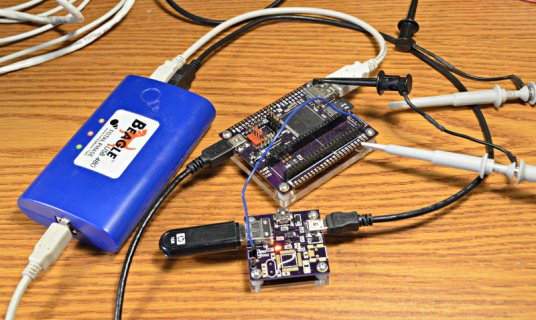PaulStoffregen
Well-known member
Isn't the Due discontinued ?
For some time, Arduino.cc was calling Due "retired". Arduino.org continued to sell it.
Arduino.org has never contributed any meaningful software work for Due, and they probably never will. Even after discontinuing Due, the Arduino.cc devs published some small updates to the Due's core library, but it's pretty clear they're now focusing on SAMD architecture for Arduino Zero & MKR1000.
Even if the hardware is still selling, for all practical purposes, Arduino Due's software support appears to be frozen.
No update, I was expecting some help to find where the code dealing with this secondary USB port is
I've actually been working on this quite a lot in the last few weeks, but so far it's just not working. There haven't been public updates, because there just isn't anything very newsworthy. But if you want to look at the work-in-progress, here it is:
https://github.com/PaulStoffregen/k66_usbhost
Believe me, this lack of progress isn't for lack of trying. The EHCI hardware is incredibly powerful, but very complex, and when things aren't right it gives very little indication why. I am working on this and I hope to have useful news to share soon. But to be honest, at this moment I'm really stuck. As you can see if you read that code, it's trying to send a control transfer, but when I test the EHCI seems to just ignore it. There's probably some minor detail not right.
"regular Arduinos" does not mean anything to me, please consider the fact that the Arduino Due (Sam3X) has a native High Speed USB port (480 Mb/s) and the Arduino Leonardo (ATmega32U4, which is used on the Teensy 2 too) has native Full Speed USB (12 Mb/s).
Indeed Arduino has many boards now with native USB ports.
However, for native USB, if you need good performance you'll quickly discover the quality of software makes a tremendous difference. A few years ago (before Teensy 3.1) when people were just starting to do large LED projects, I wrote a benchmark to measure how fast the native USB could actually receive data. The software on the PC side also can make a huge difference. Here are those old benchmarks:
https://www.pjrc.com/teensy/benchmark_usb_serial_receive.html
It's be really interesting to see how all the boards now available actually perform with this benchmark. I've done a few casual tests that show the situation is still pretty similar, with improvements in Due's transmit speed but not receive, and Arduino Zero has some substantial USB performance issues.
Maybe I'll get them all and redo the tests... but last time I spend quite a bit of time doing those tests and writing up the results. Probably doesn't make sense to put time into that when I should be (and am) spending my time on getting EHCI to work.
Last edited:



